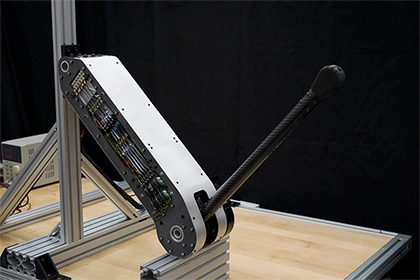- +86 19149417743
- Zhengzhou, Henan Province, China
- Mon-fri: 8am - 7pm
Get a quote

In the realm of electrical engineering and power systems, the distinction between alternating current (AC) and direct current (DC) is fundamental. Understanding the difference between these two types of electrical currents is crucial for various applications, from household appliances to industrial machinery. In this article, we will delve into the characteristics of AC and DC, explore how to differentiate between them, and discuss real-world examples of their usage.
Alternating current, commonly known as AC, is an electrical current in which the flow of electric charge periodically reverses direction. This oscillation creates a sinusoidal waveform where the voltage and current vary over time. AC is the type of electricity commonly used in households and businesses because it can be easily transformed to different voltage levels, making it ideal for long-distance power transmission.
In contrast, direct current, or DC, is an electrical current that flows in only one direction. The voltage in a DC circuit remains constant over time, creating a linear waveform. DC power sources are often batteries or solar cells, providing a stable and consistent flow of electricity. Electronic devices such as computers and mobile phones typically operate on DC power.
There are several ways to identify whether a circuit is AC or DC. Here are some of the most common methods:
A multimeter is a versatile tool that can measure voltage, current, and resistance. To identify whether a circuit is AC or DC, set the multimeter to the appropriate setting (AC or DC) and connect the probes to the circuit. The multimeter will display the type of current.
A light bulb can also be used to identify whether a circuit is AC or DC. If the light bulb lights up, the circuit is AC. If the light bulb does not light up, the circuit is DC.
If a battery is connected to a circuit, the circuit is DC. This is because a battery provides a constant voltage, which results in a constant flow of electric charge in one direction.
A power outlet is a source of AC. If a device is plugged into a power outlet, the device is powered by AC.
Here are some examples of real-world applications of AC and DC:
In conclusion, distinguishing between AC and DC is essential for understanding how electricity functions in various systems. Whether you're a professional in the field of electrical engineering or simply curious about how the devices in your home operate, knowing the difference between AC and DC can enhance your comprehension of electrical systems. By recognizing the unique characteristics of each type of current, you can better appreciate the role they play in powering our modern world.
 2024-08-30 16:01:40
Engineering
2024-08-30 16:01:40
Engineering
 2024-07-26 14:09:13
Engineering
2024-07-26 14:09:13
Engineering
 2024-07-18 09:42:00
Engineering
2024-07-18 09:42:00
Engineering